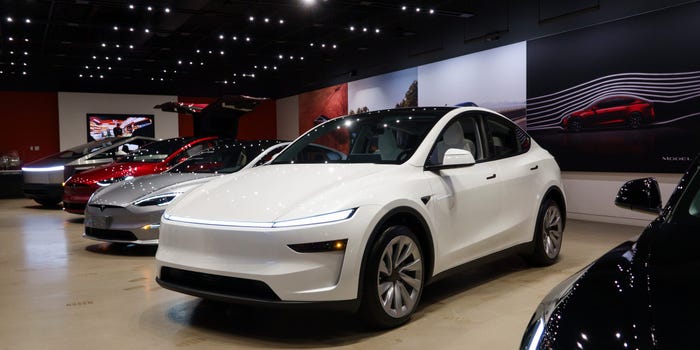UPDATE: Tesla has just unveiled lower-cost versions of its popular Model 3 and Model Y, marking a dramatic shift in the electric vehicle (EV) market as federal tax credits come to an end. The $7,500 tax credit expired on September 30, 2023, leaving automakers scrambling to find new ways to attract buyers.
In response, Tesla’s latest models have been stripped of certain features, including power seats and FM/AM radio, resulting in a price drop of approximately $5,000. This move is a clear indication that the EV landscape is changing rapidly, as manufacturers adapt to a post-tax credit environment.
Other automakers are also responding creatively. As of today, Hyundai is offering an $11,000 cash back incentive for select trims of the 2025 Ioniq 5. Meanwhile, both Ford and General Motors are reportedly looking into extending the expired tax credit by allowing down payments directly at dealer lots, as confirmed by sources from Reuters.
Industry experts are weighing in on this urgent transition. Ivan Drury, director of insights at Edmunds, noted that the end of the tax credits has prompted varied strategies among automakers. “The overarching message of tax credits going away for EVs has had a very different set of approaches from each automaker,” Drury stated. He emphasized that these discounts are primarily aimed at maintaining current sales levels rather than increasing them.
This shift is not without its consequences. Some manufacturers are hitting the brakes on their EV plans entirely. Stellantis recently announced the discontinuation of the Ram REV 1500 electric pickup due to dwindling demand. “Stellantis is reassessing its product strategy,” the company revealed in its announcement.
Additionally, Acura confirmed it would halt production of its ZDX all-electric SUV, refocusing its efforts to align with long-term goals. Despite this, Acura is moving ahead with an all-electric variant of the iconic RSX model, expected to launch in the US in the second half of 2026.
The uncertain future of EV sales hangs in the balance. Drury remarked, “How much the lower-cost EVs will prop up sales for automakers is unclear. We’re going to have to give that a few months.” With each manufacturer adopting different strategies, the next few months will be critical in determining which approaches resonate with consumers.
As the EV market evolves, consumers are encouraged to keep a close eye on these developments. Automakers are not only adjusting prices but also redefining their product strategies in the face of changing economic conditions.
Stay tuned for more updates as this story develops. Share your thoughts on these changes and how they might impact your next vehicle purchase.
